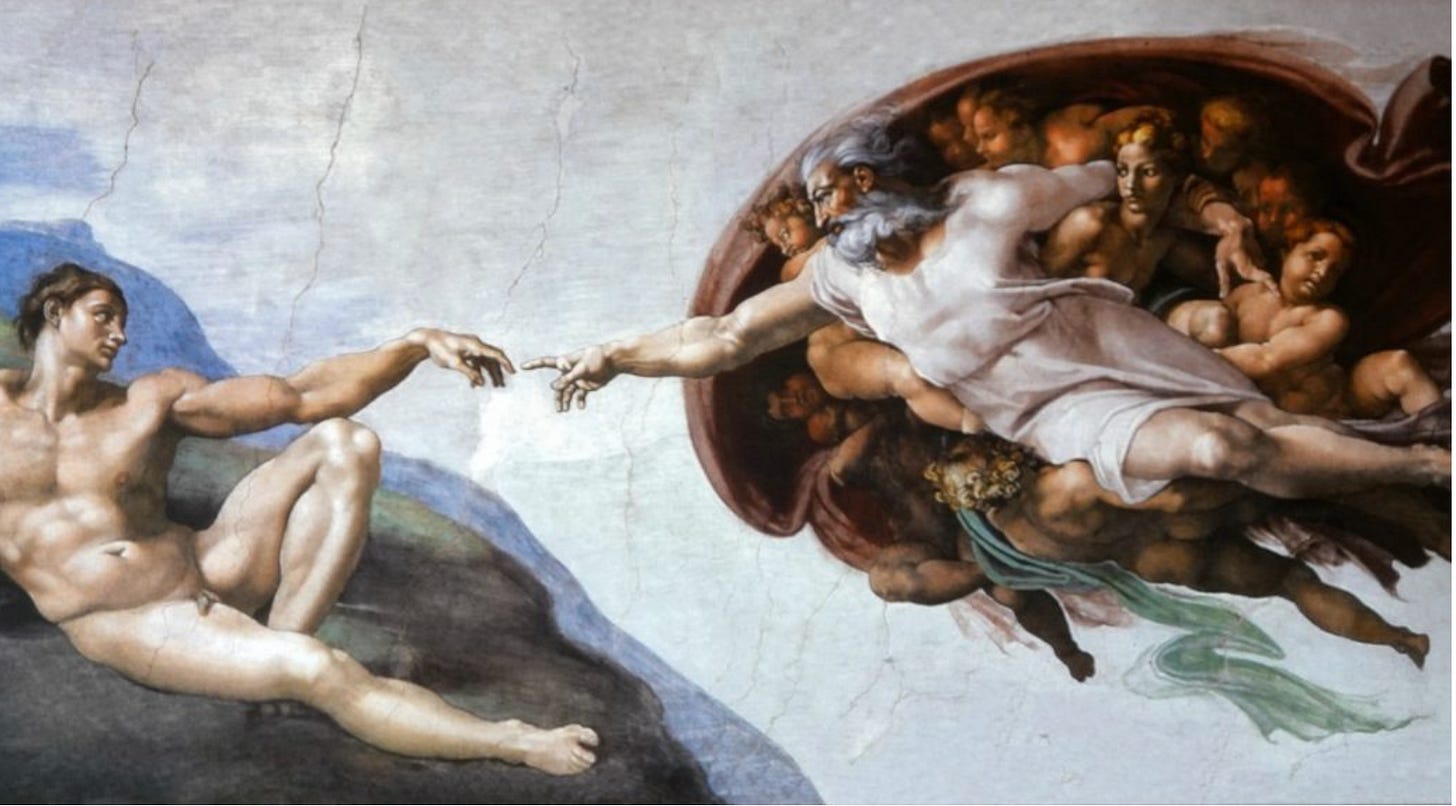Michelangelo's Message to Mankind
You have a brain; if only you would use it.
On May 8, 1505, the thirty-year-old painter, sculptor, and architect, Michelangelo di Lodovico Buonarroti Simoni, signed a contract with Pope Julius II to decorate the ceiling of the Sistine Chapel, also known as Cappella Magna ('Great Chapel') of the Vatican.
The primary motifs of the ceiling are scenes from the Book of Genesis— that is, the Creation, the Fall of Man, and the story of Noah, along with various figures that depict man and his relationship with God, and the foretelling of Christ's coming.
My favorite image on the ceiling is "The Creation of Adam,” in which God is depicted as trying to give life to the First Man.
Observe that, although Adam is well built, his posture is expressive of laziness. God reaches out to touch him, but Adam can scarcely muster the energy to sit up and extend his left arm and hand.
Some scholars have suggested that God is set in a tableau that resembles the human brain.
I suspect that the image was Michelangelo’s attempt to tell mankind, “You have a brain; if only you would use it.”





In The Road Less Travelled Scott Peck described original sin in the Garden of Eden as a kind of laziness, thereby holding up all sin up as having a form of laziness in its incipient state. He said that Eve’s failure to question the serpent when it made proclamations on behalf of God, delivering a cross-examination as it were, represented a kind of intellectual laziness. As for Adam, he similarly went along with Eve’s bite first and ask questions later deportment. Peck then went on to describe many of the human problems that he encountered in his psychiatric practice as stemming from a similar kind of laziness, an unwillingness or seeming incapacity to push pause, engage the brain and ask the right questions before making certain choices in life.
In the wise words of Tamara Vineyard from today’s earlier Substacks (Midwestern Doctor / Autism is Ischemic Stroke), “…IGNORANCE IS CONTAGIOUS.” We’d do well to stop spreading it; use th brains G-D.YWH gave us, & remember: prayer fires up th brain, too.